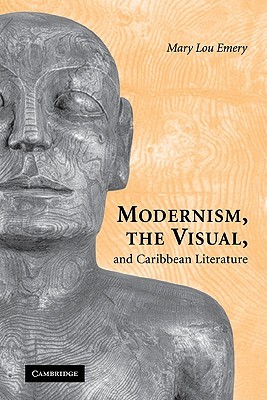
- We will send in 10–14 business days.
- Author: Mary Lou Emery
- Publisher: Cambridge University Press
- ISBN-10: 0521117097
- ISBN-13: 9780521117098
- Format: 15.2 x 22.9 x 1.7 cm, softcover
- Language: English
- SAVE -10% with code: EXTRA
Reviews
Description
Vision is a recurring obsession in the work of twentieth-century Caribbean writers. This ambitious study offers a comprehensive analysis of the visual in authors from the Anglophone Caribbean as they intersect with mainstream Modernism. While sound cultures have received more attention in studies of the Caribbean, this is the first to analyse acts of seeing, inner vision, and reflections on visual art. Mary Lou Emery analyses the art, theatre, and literature of the early twentieth century, including works by Edna Manley and Una Marson, then turns to George Lamming, C. L. R. James, Derek Walcott, Wilson Harris, and a younger generation including Jamaica Kincaid and David Dabydeen. She argues that their preoccupation with vision directly addresses philosophies of sensory perception developed at the height of the slave trade and emerges in conditions of diaspora continuing into the present. This study is an original and important contribution to transatlantic and postcolonial studies.
EXTRA 10 % discount with code: EXTRA
The promotion ends in 19d.23:42:57
The discount code is valid when purchasing from 10 €. Discounts do not stack.
- Author: Mary Lou Emery
- Publisher: Cambridge University Press
- ISBN-10: 0521117097
- ISBN-13: 9780521117098
- Format: 15.2 x 22.9 x 1.7 cm, softcover
- Language: English English
Vision is a recurring obsession in the work of twentieth-century Caribbean writers. This ambitious study offers a comprehensive analysis of the visual in authors from the Anglophone Caribbean as they intersect with mainstream Modernism. While sound cultures have received more attention in studies of the Caribbean, this is the first to analyse acts of seeing, inner vision, and reflections on visual art. Mary Lou Emery analyses the art, theatre, and literature of the early twentieth century, including works by Edna Manley and Una Marson, then turns to George Lamming, C. L. R. James, Derek Walcott, Wilson Harris, and a younger generation including Jamaica Kincaid and David Dabydeen. She argues that their preoccupation with vision directly addresses philosophies of sensory perception developed at the height of the slave trade and emerges in conditions of diaspora continuing into the present. This study is an original and important contribution to transatlantic and postcolonial studies.


Reviews